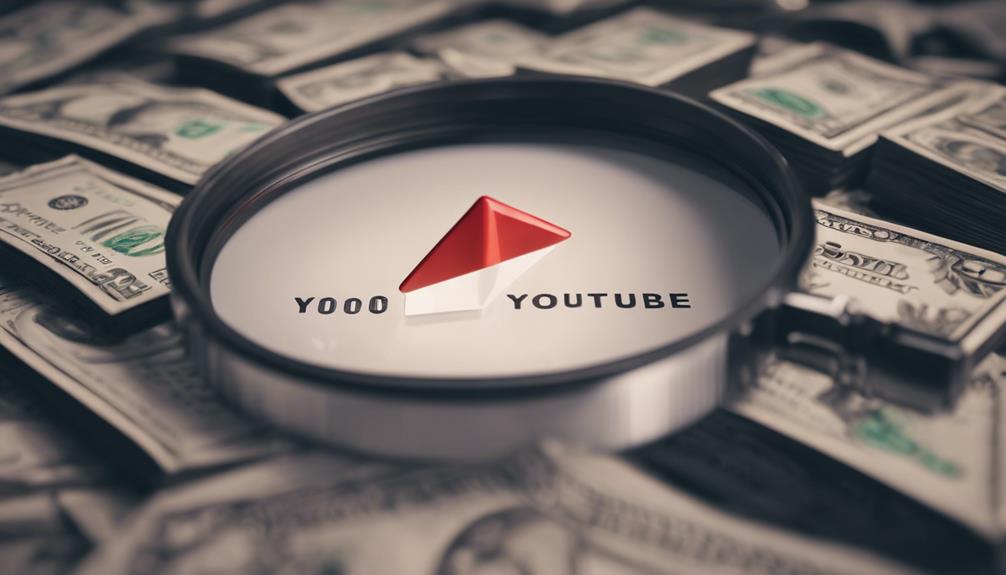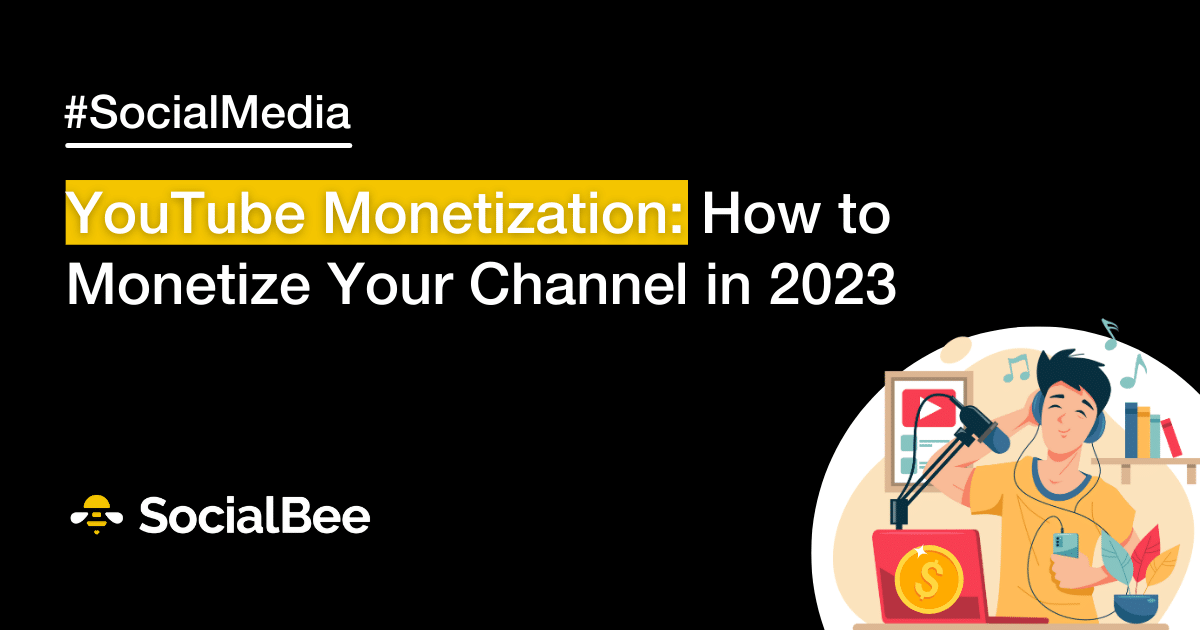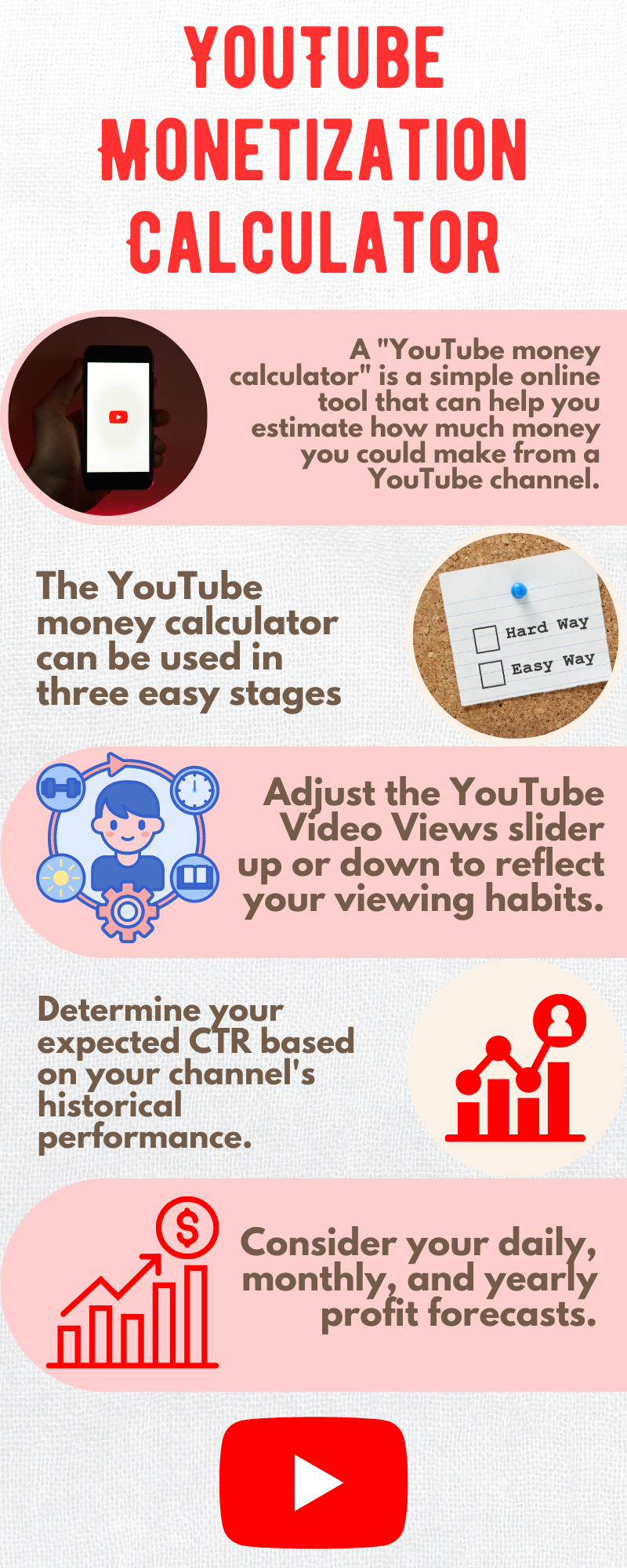YouTube has transformed from a simple video-sharing platform to a powerhouse for creators looking to make a living online. With millions of content creators, the question of monetization becomes crucial. But what exactly does it mean to monetize your channel? In this post, we’ll dive into the world of YouTube monetization, explaining how creators earn money and the impact of viewer engagement—particularly through likes. Whether you’re a budding YouTuber or just curious about how it all works, you’re in the right place!
How Likes Influence YouTube Earnings

When it comes to earning money on YouTube, it's not just about creating great content; it's also about how your audience interacts with it. One of the most significant factors in this interaction is the likes your videos receive. But how do these likes translate into actual earnings? Let’s break it down.
Understanding the YouTube Algorithm
YouTube uses a complex algorithm to decide which videos to promote to users. Likes play a crucial role in this process. When viewers like your videos, it signals to YouTube that your content is valuable and engaging. Here’s how it works:
- Increased Visibility: Videos with more likes often appear more frequently in recommended sections and search results, attracting even more views.
- Audience Engagement: A higher like-to-view ratio can indicate a strong connection between the creator and the audience, further pushing the algorithm to promote your content.
The Importance of Engagement Metrics
Likes are a critical component of overall engagement metrics, which include comments, shares, and watch time. These metrics help YouTube gauge the popularity of a video. When you upload a video that resonates with viewers and garners lots of likes, it’s not just validation—it's also a marker that can attract advertisers looking to partner with popular creators.
Affiliate Marketing and Sponsorships
In addition to ad revenue, creators often leverage their audience's engagement to secure sponsorships and affiliate deals. Here’s how likes contribute:
- Attracting Sponsors: Brands are more likely to approach creators with high engagement rates, as it indicates a loyal and responsive audience.
- Boosting Affiliate Sales: When viewers like, share, or comment on your videos, it can lead to increased traffic to affiliate products, resulting in higher commissions.
Building a Community
Ultimately, likes foster a sense of community. When viewers see their fellow watchers liking your content, it encourages them to engage too, whether through likes or comments. This vibrant community not only drives views and engagement but also enhances your reputation as a trusted creator, making it easier to monetize your content through various avenues.
Final Thoughts
So, while it may seem that likes are just a simple thumbs-up, they play a monumental role in a YouTuber's journey to monetization. By aiming to create content that resonates with your audience, you can maximize your likes and unlock more avenues for earning through views, sponsorships, and community engagement. Happy creating!
Also Read This: How to Download YouTube Videos in HD for High-Quality Playback
The Role of Ad Revenue in YouTube Payments

When it comes to YouTube monetization, ad revenue stands at the forefront of how creators make money. It's akin to the golden egg in this digital economy, and here’s why. YouTube allows content creators to earn money by displaying ads before, during, or after their videos. So, how does this whole process work?
Firstly, to become eligible for ad revenue, you need to join the YouTube Partner Program (YPP). This requires meeting specific criteria, including:
- A minimum of 1,000 subscribers
- 4,000 watch hours over the past 12 months
- Compliance with all YouTube monetization policies
Once you’re part of YPP, you can start monetizing your content. Advertisements are displayed in various formats:
- Pre-roll ads (before the video)
- Mid-roll ads (during longer videos)
- Post-roll ads (after the video)
- Banners and overlays
The revenue generated from these ads varies greatly depending on factors like your audience’s location, the content's niche, and overall engagement rates. Advertisers typically pay per thousand impressions (CPM) or per click (CPC). This means that the more viewers you attract, the more potential dollars flow into your account.
However, it’s essential to note that not all views will generate revenue. For instance, viewers using ad blockers won’t contribute to your earnings, and YouTube keeps a cut of the ad revenue—around 45%! This may seem steep, but with a significant following and high engagement levels, ad revenue can still stack up.
The key takeaway here is that while ad revenue is a substantial part of YouTube earnings, it’s vital to foster a dedicated viewer base that engages with your content actively. The more watch time and interaction your videos receive, the more attractive you become to advertisers—ultimately leading to more ad placements and increased income.
Also Read This: What Channel is CSPAN on YouTube TV? Find the Details Here
Exploring Other Revenue Streams for YouTubers

While ad revenue might be the most recognized route to making money on YouTube, many savvy creators diversify their income streams. Let’s dive into some popular alternatives that successful YouTubers often leverage:
- Sponsored Content: Brands often collaborate with YouTubers to promote their products or services in exchange for payment. These sponsorship deals usually involve creating a video or segment that highlights the product in a way that feels organic to the channel.
- Merchandise Sales: Many creators design and sell their own merchandise, whether it’s clothing, accessories, or digital downloads. This not only generates additional revenue but also fosters a sense of community among fans who want to support their favorite creators.
- Memberships and Patreon: Platforms like Patreon enable creators to offer exclusive content and perks to their most devoted fans for a monthly fee. YouTube also offers channel memberships, providing another avenue for generating income directly from subscribers.
- Affiliate Marketing: Many YouTubers include affiliate links in their video descriptions. When viewers purchase through these links, the creator earns a commission at no extra cost to the consumer. This method works particularly well in product review and tutorial niches.
- Online Courses and Workshops: If you have expertise in a specific area, creating and selling online courses can be profitable. Many creators transition their knowledge into comprehensive lessons that appeal to their audience.
Diversifying your revenue streams not only boosts your earning potential but also helps stabilize your income, especially since ad revenue can fluctuate. Embracing various monetization strategies empowers you to cultivate a sustainable career on YouTube, allowing for creative freedom and growth in this exciting digital landscape!
Also Read This: How to Get PAC-12 Network on YouTube TV for College Sports Fans
5. Factors Affecting YouTuber Earnings
When it comes to YouTube monetization, various factors play a significant role in determining how much a YouTuber can earn. It’s not just about having a high number of subscribers or views; there’s a intricate calculation behind the scenes. Let’s unpack some of the key factors that can influence a YouTuber's earnings.
- Ad Revenue: The primary source of income for many YouTubers is ad revenue. This is generated through the YouTube Partner Program (YPP), allowing creators to display ads on their videos. The amount earned per view can vary based on niche, geographic location, and seasonality.
- Niche and Content Type: Different niches attract different ad rates. For example, finance and technology content often garners higher CPM (cost per thousand impressions) rates compared to lifestyle or vlogging content. The more valuable the content is perceived to advertisers, the more ads they are willing to pay to display on it.
- Viewer Engagement: Engagement metrics like likes, comments, shares, and watch time directly affect a video's visibility. More engagement can lead to higher ad revenue because it signals to YouTube's algorithm that people find the content valuable and enjoyable. Higher engagement often results in videos being recommended more, leading to more views.
- Geographic Location: The geographical location of viewers can impact earnings significantly. Advertisers are willing to pay more for views from certain countries, particularly those with higher purchasing power like the United States, Canada, and some European countries.
- Video Length: Videos that are over 8 minutes long allow creators to place multiple ads throughout. This can generate more revenue compared to shorter videos, but it also requires maintaining audience interest throughout.
Understanding these factors can help aspiring YouTubers strategize their content and engagement efforts to maximize their potential earnings. It’s not just about creating content but also being savvy about how each element plays into the monetization landscape.
Also Read This: Why Ryan Trahan Stepped Back From YouTube and What’s Next
6. How YouTube's Algorithm Works in Relation to Engagement
YouTube’s algorithm is the secret sauce that determines content visibility and recommendations on the platform. But how does it all work, especially in relation to viewer engagement? Let’s break it down in a straightforward way.
YouTube employs a complex algorithm that considers various factors to curate personalized content for users. The algorithm looks at:
- Watch Time: The total amount of time viewers spend watching a video is critical. The longer the viewer stays engaged, the more likely the video is to be promoted. This is why creating captivating, high-quality content that keeps viewers watching until the end is essential for growing a channel.
- Click-Through Rate (CTR): This measures how often people click on your video after seeing the thumbnail and title in their feed. A compelling title and an eye-catching thumbnail can significantly enhance CTR, leading to more views.
- User Engagement: Likes, comments, shares, and subscriptions are vital indicators of how well a video resonates with viewers. High levels of engagement signal to the algorithm that the content is valuable, prompting it to suggest the video to more users.
- Consistency: Posting videos regularly can influence how the algorithm perceives your channel. Consistency can lead to better visibility and user expectation around new content.
- Audience Retention: This metric tracks how many viewers watch your video for a significant duration. If viewers drop off early, the algorithm interprets this as a sign that the content may not be engaging enough.
By focusing on these elements, creators can better understand what makes their content thrive in the YouTube ecosystem. It's all about creating a feedback loop: good content increases engagement, which improves visibility, leading to even more viewers and potential earnings. In the end, a successful YouTube channel isn’t built overnight; it requires dedication, creativity, and a solid grasp of how the platform operates.
Conclusion on YouTuber Earnings and Likes
In summary, understanding how YouTubers earn money through likes is vital for both creators and viewers alike. Likes play a significant role in the overall success of a YouTube channel, influencing various monetization avenues. Here are some key points to remember:
- Engagement is Key: Likes are a clear indicator of viewer engagement which can lead to higher visibility in YouTube's algorithm, driving more traffic to a creator's channel.
- Ad Revenue: Higher likes can lead to increased ad revenue, as engaged audiences attract better sponsorships and higher CPM (cost per thousand views) rates.
- Brand Partnerships: Brands often seek YouTubers with high engagement rates, meaning more likes can translate to lucrative partnership opportunities.
- Merchandise Sales: Creators with dedicated fanbases are more likely to see higher merchandise sales, which can be significantly impacted by the level of engagement reflected through likes.
- Diverse Revenue Streams: Likes can indirectly boost other income streams such as memberships, content creation funds, and affiliate marketing.
Ultimately, while likes alone do not directly equate to earnings, they serve as a crucial metric that influences various monetization strategies. Aspiring YouTubers should focus on creating engaging content that resonates with their audience to boost likes and subsequently enhance their earning potential. By fostering a community that regularly interacts with their content, creators can unlock numerous financial opportunities on the platform.
 admin
admin








